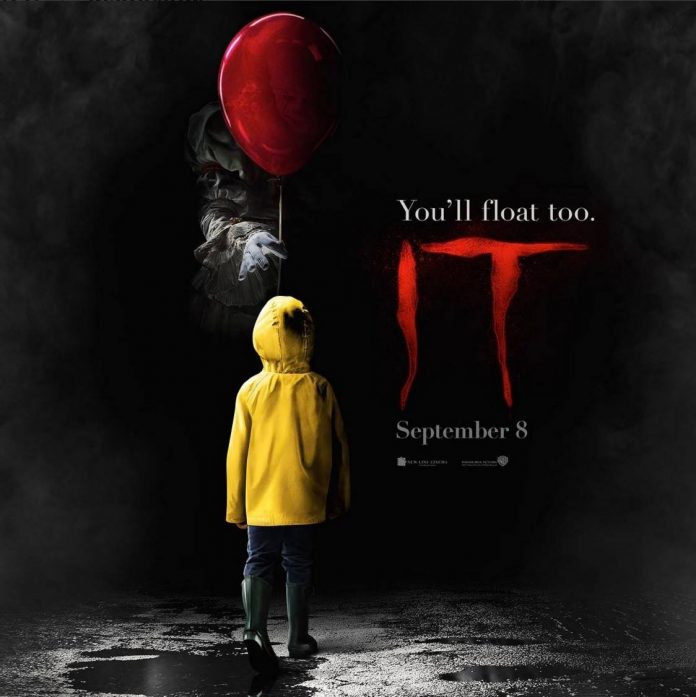Connor Heaton
Reporting correspondent
cheaton@jccc.edu
The 2017 movie adaptation of Stephen King’s “IT” floated to the top, popping box office records with its $123.1 million opening weekend. The killer clown claimed several titles including “Widest R-rated opening,” “Biggest opening weekend for a Stephen King adaptation” and “Second biggest opening for an R-rated film.”
There’s a reason for this clown’s critical acclaim, as “IT” establishes itself as both an incredibly solid adaptation and groundwork for what’s to come.
“IT” is directed by Andrés Muschietti and follows the kids of “the Loser’s Club,” a group of outcasts and social rejects who together must face IT, a supernatural force which feeds on the fears and flesh of children.
The film takes place in 1989 within the mysterious town of Derry, Maine. This is a time before iPhones and PlayStations, where kids go to the local quarry to goof off, go to the arcade and explore dank sewers for fun as they ride their bikes across the neighborhood. Despite my being a 90s kid, this film exudes a sense of nostalgia through its shot composition and themes; “IT” feels like a movie I would have slotted into my VHS back in the day.
Though first and foremost a story about killer clowns, it’s important to know that “IT” looks and feels less like a shock and terror horror flick and more like an R-rated 80s buddy movie, like “The Goonies” and “Stand by Me.” In fact, the comparisons to “Stranger Things” is an apt one since one of the main characters, Richie (Finn Wolfhard), also plays Mike in “Stranger Things.”
Right off the bat, one of the film’s greatest strengths are the characters and how they interact with each other, as most horror protagonists have bonds as paper-thin as their personalities. There’s a tight-knit relationship these kids have that makes this movie more than just another slasher flick, as each of them are interesting in their own ways and watching them play off one another adds great moments of levity and comedy in the face of overwhelming terror.
It’s also worth noting that this adaptation doesn’t pull any punches and fully earns its R-rating well within the first few minutes.This is a far-cry from the silly made-for-tv 90s adaptation as things happen in this film that made this reviewer, a long-time fan of “The Walking Dead,” squirm in his seat. Audiences should know as well that the trailers don’t show much of IT’s true nature, and that alone deserves massive kudos, as modern-day horrors tend to reveal their best tricks right in the trailers.
Bill Skarsgård is no bozo in his performance as Pennywise the Dancing Clown. Unnerving is the operative word to use as the prosthetics and makeup coupled with his baby face and wall-eyed glare transform the Scandinavian actor into a terrifying sight to behold. Though an entirely different film in tone and cast, audiences will no doubt make comparisons between Skarsgård and Tim Curry’s miniseries interpretation of Pennywise, but the two are vastly different.
Curry’s clown was mostly a mischief-maker. While his intentions were always to eat children, he felt more like a clown, making bad jokes and puns while taunting his victims. Skarsgård’s is much more foul, preferring more violent and unnerving ways of tormenting “the Loser’s Club.” It’s worth to note that while Pennywise can kill indiscriminately, he prefers to feed on their fears beforehand, something akin to salting the meal. Because of this, he transforms into each child’s worst nightmare, from hellish paintings come to life to headless children and lepers.
The most disturbing aspect of Pennywise is how he moves. Pennywise, in his most dangerous, shutters and spasms towards his victims at high speeds with jerky, almost marionette-like articulation. It’s the scenes where the movements are just barely human that are the most unnerving and effective, but then there are the scenes where he is ten feet tall with piranha teeth chasing the kids that the CGI starts to lose its fear factor.
It isn’t that the CGI is bad — it’s really not. It’s that it sometimes takes away from the actor himself, as the film often resorts to strange contortions and chase scenes and jump scares over a more subtle atmosphere of dread and terror, especially during the climax. One standout exception is the iconic storm drain scene, in which Georgie, the little brother of one of “the Loser’s Club,” chases a paper boat down a storm-swept Derry street and comes face to face with Pennywise in the storm drain.
This works because of the personal encounter between a young boy and a goofy-yet-sinister clown, not a horrifying demon. There is a tone of mystery, with the audience alone with him, deciding whether or not to trust this storm-drain psycho. It’s the subtlety and the unpredictability of scenes like this that exude the most terror, and it just so happens to be the moment with the most “human” interactions from Pennywise.
That being said, it’s often the adults in Derry which the kids must overcome who prove the most fearsome. The film does an excellent job of making each adult character just ever so slightly “off,” so it’s hard to tell whether they’re real or just another of Pennywise’s tricks.
The film does an amazing job of making everything feel as though the whole time, everything could have been a dream — or nightmare. However, it’s the incidents in which these surreal tones are shattered and the characters do something truly gut-wrenching that the film is most effective scare-wise.
While it has a few missteps, it’s impossible to deny how much fun it was to sit through this film. Tense, atmospheric and gripping describe “IT” better than “scary” ever could. It’s the set design and direction that emulates the great buddy movies of the 80s that makes it worth watching, and it’s the creative encounters and relationships that make “IT” worth remembering. Most everything in this film just feels so love-crafted to perfection.






















